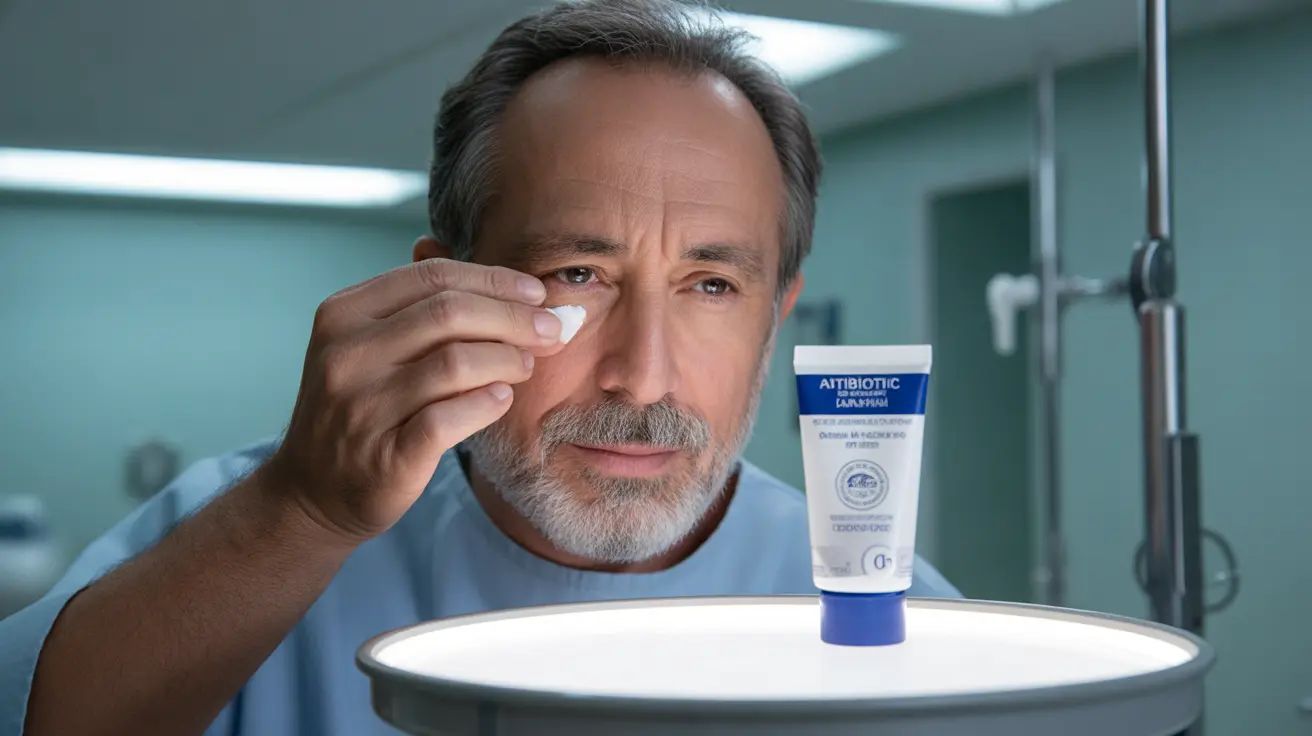Blepharitis, a common inflammatory condition affecting the eyelids, often requires a combination of treatments, including antibiotics, to manage symptoms effectively. Understanding the various antibiotic options available, both topical and oral, can help patients and healthcare providers make informed decisions about treatment approaches.
In this comprehensive guide, we'll explore different antibiotic treatments for blepharitis, their effectiveness, potential side effects, and how they complement other management strategies.
Types of Antibiotic Treatments for Blepharitis
Antibiotic treatments for blepharitis generally fall into two main categories: topical ointments and oral medications. Each type serves specific purposes and may be recommended based on the severity and type of blepharitis present.
Topical Antibiotic Ointments
Topical antibiotic ointments are often the first-line treatment for anterior blepharitis. These medications are applied directly to the eyelid margins and include:
- Bacitracin
- Erythromycin
- Tobramycin
- Gentamicin
These ointments work by targeting bacterial infections that may be contributing to the inflammation. They're typically applied to the eyelid margins once or twice daily, depending on the prescription.
Oral Antibiotics
For more severe cases or posterior blepharitis, oral antibiotics may be prescribed. Common oral antibiotics include:
- Doxycycline
- Azithromycin
- Tetracycline
- Minocycline
These medications not only combat bacterial infection but also have anti-inflammatory properties that can help reduce overall inflammation and improve meibomian gland function.
Complementary Treatment Approaches
While antibiotics play a crucial role in treating blepharitis, they're most effective when combined with proper eyelid hygiene and other management strategies:
- Warm compresses
- Gentle eyelid cleansing
- Artificial tears
- Omega-3 supplements
- Regular eyelid massage
Managing Treatment Expectations
Success with antibiotic treatment often depends on consistent application and proper technique. Patients should understand that:
- Treatment duration varies based on severity
- Some cases may require long-term management
- Regular follow-up with healthcare providers is important
- Combination therapy often yields better results
Frequently Asked Questions
What are the most common types of antibiotic ointments used to treat blepharitis?
The most commonly prescribed antibiotic ointments for blepharitis include erythromycin, bacitracin, and tobramycin. These ointments are typically applied directly to the eyelid margins and are effective against bacterial infections that contribute to anterior blepharitis.
How effective are oral antibiotics in treating posterior blepharitis?
Oral antibiotics, particularly tetracyclines like doxycycline, are highly effective in treating posterior blepharitis. They work by reducing inflammation and improving meibomian gland function, with many patients seeing significant improvement within 4-6 weeks of treatment.
What are the typical side effects of using topical antibiotics for blepharitis?
Common side effects of topical antibiotics may include temporary burning or stinging, blurred vision immediately after application, and occasional eye irritation. Serious side effects are rare, but patients should report any significant discomfort to their healthcare provider.
Can routine eyelid hygiene alone manage blepharitis symptoms without antibiotics?
While good eyelid hygiene is essential and may control mild cases, moderate to severe blepharitis often requires antibiotic treatment in addition to hygiene measures. The combination of both approaches typically yields the best results.
What are the differences between azithromycin and doxycycline in treating blepharitis?
Azithromycin typically requires a shorter course of treatment (3-5 days) and may cause fewer gastrointestinal side effects compared to doxycycline. Doxycycline is usually prescribed for longer periods (1-3 months) and may be more effective for severe cases, but requires sun protection and cannot be taken by pregnant women or children under 8.




